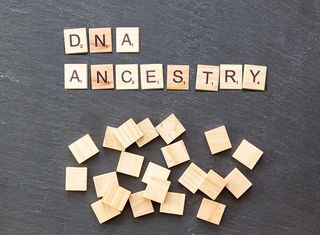Genetics
On Its 20th Anniversary, DNA Testing Reaches a Tipping Point
We could never have imagined how this technology would reshape us.
Posted May 6, 2020 Reviewed by Gary Drevitch

The late historian Melvin Kranzberg once wrote that technology is neither good nor bad, nor is it neutral. He meant that it’s difficult for humans to predict how technologies will be used, and that how we regard them depends on context. Kranzberg referenced the insecticide DDT, lauded during the middle of the 20th century for its ability to combat malaria and then reviled in the West for its harm to the environment – even as poorer nations like India continued to use the chemical to save people’s lives. You can think about Kranzberg’s law in terms of technologies like Twitter, which can spark people-powered revolutions but also give voice to racists and trolls, and Facebook, which helps us forge communities but can also serve as a platform for disinformation campaigns. Not good, not bad; not neutral either.
As I was writing my new book The Lost Family, which explores how the rise of home genetic testing is changing how we see ourselves, I began to think of Kranzberg’s quote in relation to home DNA testing. The practice of spitting into a vial or swabbing your cheek to find out more about your family history started exactly twenty years ago, when a company called FamilyTreeDNA sent out its first test kits in the spring of 2000. These days, FamilyTreeDNA and other companies like Ancestry, 23andMe and MyHeritage return lists of genetic relatives and ethnicity estimates, at a cost of $99 or less. The results are much more precise and predictive than they were early on, when DNA testing was seen as a niche product for only the most dedicated genealogical hobbyists.
But even a few years ago, as spit kits were becoming popular holiday gifts, we could not foresee the massive implications of this technology, could not conceive of the way that it would transform our families, our privacy, and the practice of law enforcement. We could not conceive of it because human beings are bad fortune-tellers, and because social transformation rarely announces itself with a drum roll and raised curtain.
To date, at least 30 million people have tested through this industry. The result is something few could have predicted at the beginning: we’ve reached a tipping point. Just as other technologies move from niche to optional to so-ubiquitous-you-can’t-be-without-it, so DNA testing has become quite commonplace – with a twist. When you test, you are not just making a decision on your own behalf, but on behalf of the relatives who share your genetic material. This means that if your brother unknowingly conceived a child 30 years ago, he need never consent to DNA testing in order to be identified and contacted by that child; it is enough that you or an aunt or cousin chose to send saliva into Ancestry. Having hundreds or thousands of genetic relatives in a database is a boon to genealogists trying to surmount brick walls in their research, and it also means countless moments of reckoning for families suddenly uncovering more immediate surprises.
This is neither good, nor bad; nor is it neutral. Much depends on your place in these complex family dynamics, and your relationship to the new information. In future columns, I will write about the different ways that DNA testing can play out for those on all sides of a genetic revelation, and why. Adoptees, donor-conceived individuals and children of NPEs – that stands for “non-paternity event” or “not parent expected” – have been using DNA to discover their genetic identities and kin for a decade, and they speak movingly about the profound importance, and life-changing power, of knowing these fundamental facts about themselves. In some cases, the revelations of DNA testing may ultimately serve as a corrective for secrets that, to contemporary eyes, never should have been secrets at all.
And, at the same time, there can be significant emotional fallout for those who find themselves surprised by a family secret. I’ve emailed or spoken with hundreds of people whose lives were changed by DNA testing, and seen how the revelations brought about by this technology may cause rifts in families and may reconstitute them – prompting a moving reunion between siblings who never knew one another existed, or prompting a cease-and-desist letter from a father to his genetic child. Crummy fortune-tellers that we are, we simply can’t predict how these reconciliations will go.
DNA testing is reconfiguring how we think about our own families. It is changing how we think about what we owe the past, and what it owes us. It is making possible historical reckonings with cultural inequities, cruel taboos and abuses of power – how unmarried mothers were treated, how fertility problems were stigmatized, how ethnic minorities were pressured to assimilate and even to erase their identities. And all of this – the collision of past with present, of old family narratives with scientific truths – is happening on a grand scale.
In some cases, the results delivered to consumers’ laptops pose questions about the use of other technologies, as with the fertility industry’s regulation of donor insemination. There are no limits on the number of children that one man can help conceive; according to Wendy Kramer of the Donor Sibling Registry, a nonprofit that advocates for the donor-conceived, there are cases of between 100 and 200 half-siblings conceived through a single sperm donor. This has profound repercussions for the people left to grapple with these sprawling genetic networks, including in cases when half-siblings have become classmates and friends without knowing they were related.
DNA testing also puts the lie to promises of donor anonymity, which are effectively rendered moot by commercial databases that feature lists of testers’ genetic relatives. Beyond that, across the country and the globe, DNA testing has uncovered cases from decades back in which doctors substituted their own sperm unbeknownst to patients. The profound sense of outrage and betrayal caused by these revelations has prompted what are known as fertility fraud laws to be passed or under consideration in several states.
In such cases, DNA testing is more the messenger than the change-maker, revealing questions we might have asked if only we’d known to ask them. In other cases, the genetic testing industry is itself effecting change. The new field of forensic genealogy, which takes advantage of the quasi-public nature of databases like GEDmatch and FamilyTreeDNA, has altered how law enforcement solves cold cases, and in the process has sparked ferocious debates among privacy experts and consumers about consent and about the importance of civil liberties weighed against the desire to put violent criminals behind bars.
This is really the moment of change, when 50-year-old homicides are suddenly being solved, when the concept of sperm donor anonymity is being rendered absurd, and when there’s increasingly no such thing as an adopted person who doesn’t know her birth family if she wants to. This is the moment when we all realize how present the past is, and when we start having difficult conversations about truths never spoken. Attention, technology historians, not to mention bioethicists, sociologists and psychologists: this is the moment you’ll be studying for decades to come.




